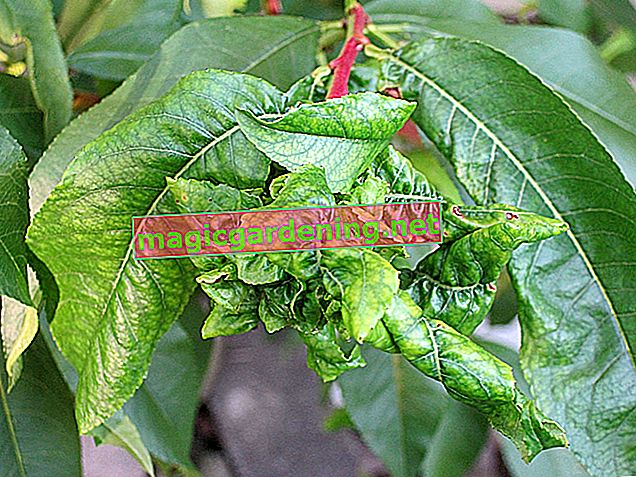
Bean mosaic virus
Yellowish, mosaic-like spots on the leaves indicate the viral disease. Leaves yellow and die, in the worst case the whole plant dies.
also read
- Diseases and pests of gladioli
- Diseases and pests on the lavender heather
- Diseases and pests endanger the hops
The cause of the infestation is already infected seeds. Aphids transmit the virus to neighboring plants, and heat encourages it to spread. Infected plants can be disposed of in the compost.
Prevention:
- Buy certified, virus-tested seeds
- grow resistant varieties
Greasy spot disease
It mainly affects French beans and firebeans and is triggered by bacteria. Small yellow to light green, oily spots appear on the leaves. The leaves deform and die, often before they bloom. In addition, pods, stems and seeds can be infected.
The causes are infected seeds, infested plant remains and the spread by snails.
Combat:
- Syringes with horsetail broth
- burn infected plants
Focal spot disease
In this fungal disease, leaves, stems and pods are covered in dark, burned-looking spots. If the infestation is severe, the leaves are shed. If the fungus attacks the seedlings, even young plants are threatened with dying off. French beans are particularly at risk.
Combat:
- burn infected plants
- Don't grow beans on the same bed for five years
Bean grate
The fungal disease occurs in damp weather and is recognizable by white pustules on the underside of the leaf and on pods. The cause is unnecessary nitrogen fertilization and the close proximity of the plants.
Combat:
- destroy infected plants
- Don't grow beans in this place for five years
Black bean aphid
The approximately 2 mm large black bean aphid can be recognized by its yellow antennae and legs. It attacks the undersides of the leaves and the tips of the shoots and cripples them. The black bean aphid overwinters in the ground or on host plants such as the snowball and attacks the plant as early as May.
Combat:
- cut off affected shoot tips
- Control with nettle infusion, neem, neudosan aphid-free
Bean fly
Holes in the bean seeds and feeding points on the cotyledons and root necks indicate the infestation by the 4 - 5 mm large, gray bean fly. It lays its eggs in bean seeds and seedlings from April to May, and its larvae eat their way through the cotyledons.
Prevention:
- Pre-germinate seeds
- do not sow in beds on which fresh manure has been applied
- Protect beans with a culture protection net
- Simultaneous sowing of the savory, which is unpopular with bean flies
Snails
Seedlings and young bean plants in particular are a treat for snails. To protect the plants, slug pellets (€ 16.78 at Amazon *) should be sprinkled. Preference is also helpful, the plants are less susceptible due to the growth lead.
Tips & Tricks
Picking beans in dry weather reduces the risk of infection for neighboring plants. When picking, pressure points and damage can occur, which serve as entry points for spores and bacteria. Their reproduction would be encouraged by wet weather.








